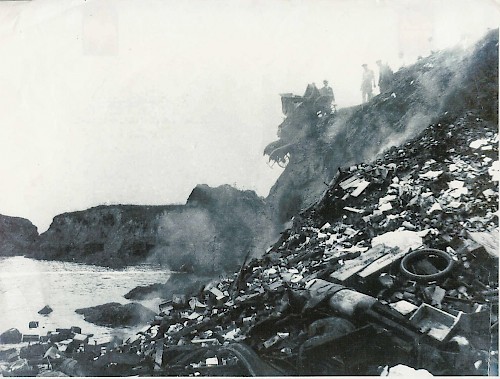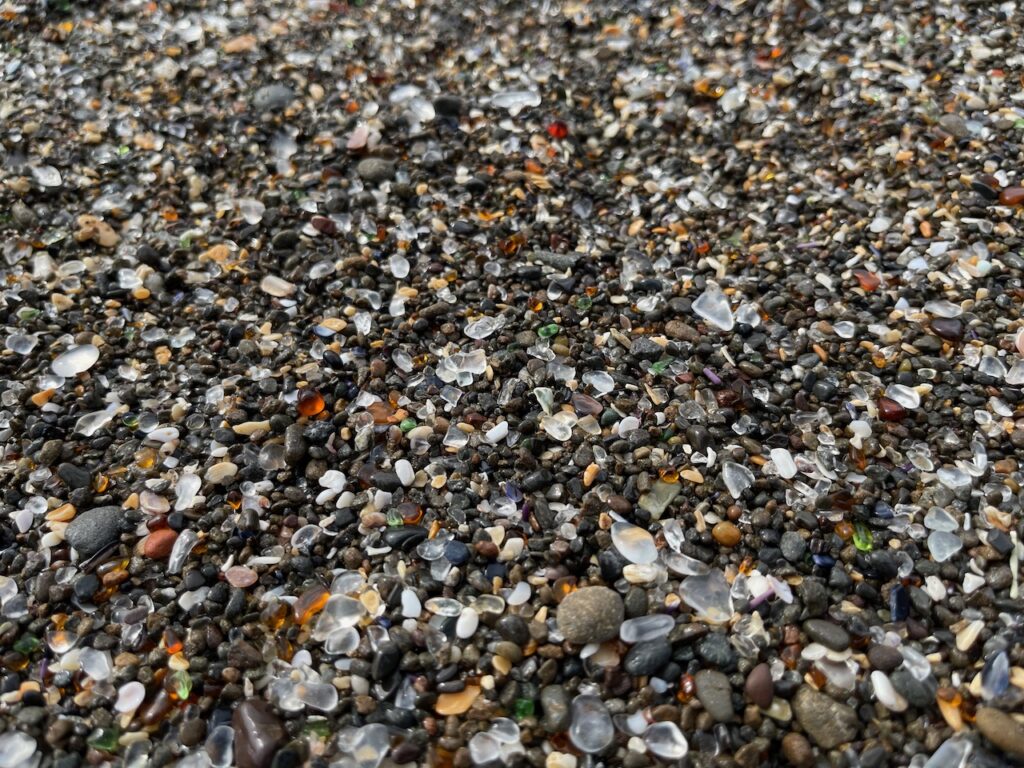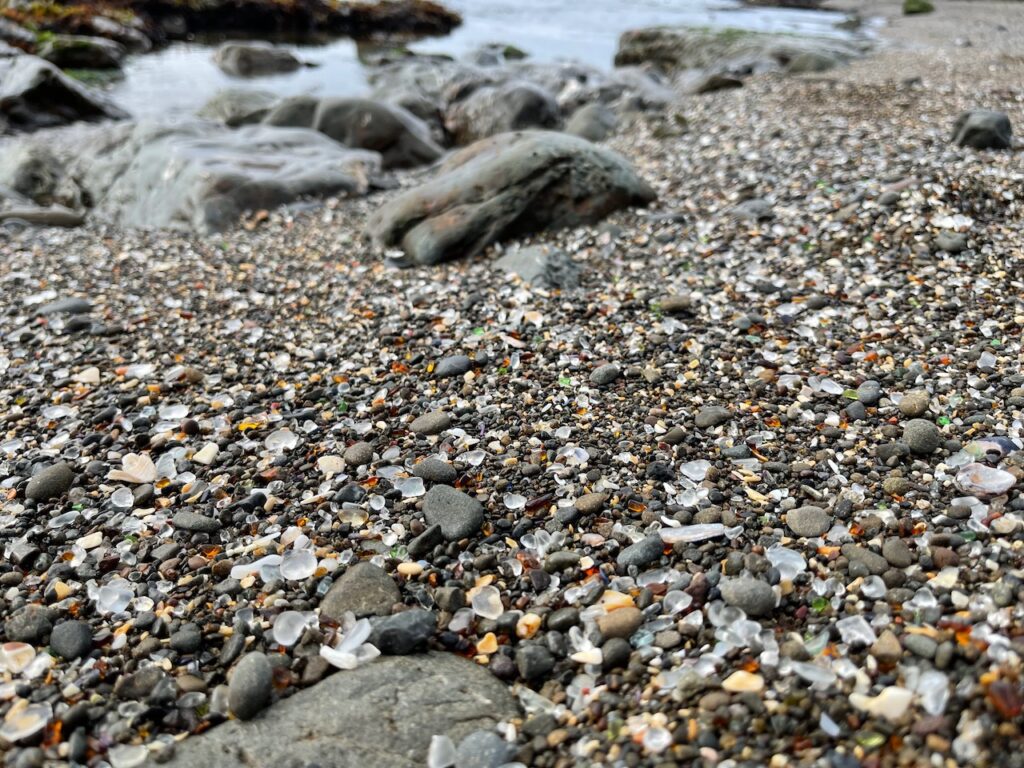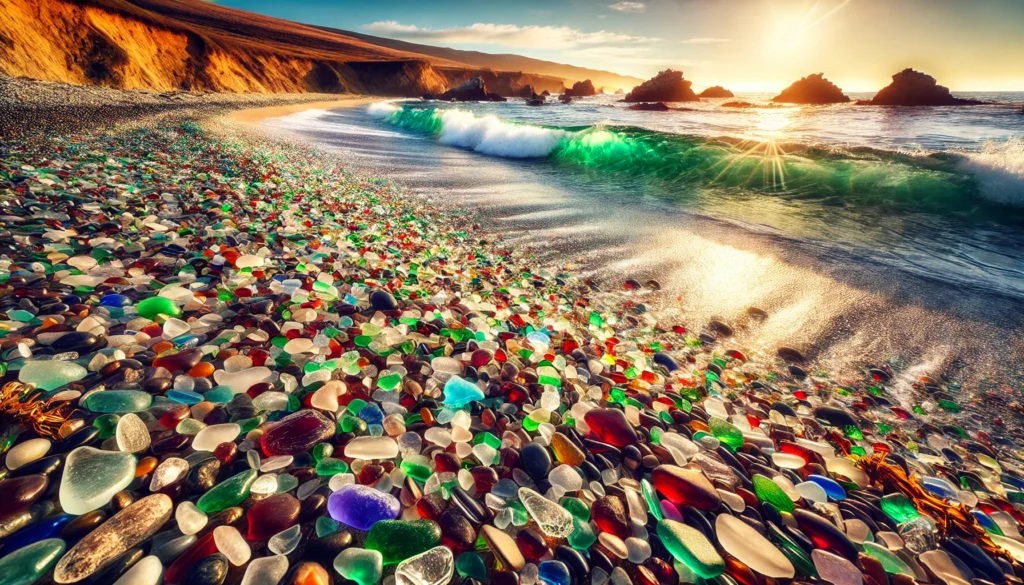Tucked away on the rugged Mendocino Coast, Glass Beach near Fort Bragg is one of nature’s most unexpected masterpieces. What was once a dumping ground for discarded bottles, household trash, and even old cars has been transformed into a stunning mosaic of smooth, colorful sea glass, polished by decades of relentless waves.
A Brief History: From Trash to Treasure

The story of Glass Beach is a tale of environmental redemption. From the early 1900s until 1967, Fort Bragg residents used this coastal stretch as an informal landfill, dumping everything from glass bottles and pottery to appliances and rusted car frames over the cliffs. The ocean, however, had its own plans. Decades of churning waves gradually broke the glass into smaller, rounded pieces, grinding away the sharp edges to create the brilliant, polished fragments that now glitter across the shoreline.
In the 1960s, environmental awareness led to a cleanup effort, removing larger debris and toxic waste. But the glass remained, and nature continued its work—transforming human negligence into an unexpected wonder.
How Sea Glass is Formed
Sea glass begins its life as discarded shards of glass, but the ocean’s constant movement smooths and frosts each fragment into a unique, jewel-like piece. The process can take anywhere from 20 to 50 years, depending on factors like wave action, saltwater exposure, and the original thickness of the glass.
Some of the rarest pieces on Glass Beach include:
- Ruby Red – Once found in pre-1967 auto tail lights.
- Deep Sapphire Blue – From old medicine and apothecary bottles.
- Emerald Green – Likely from vintage soda and beer bottles.
- Soft Lavender – A rare find, often originating from glass containing manganese, which turns purple with prolonged sun exposure.

The Three Glass Beach Sites
Many visitors don’t realize that there are actually three separate Glass Beach sites, all former dump locations with layered deposits of sea glass. The most well-known section is the easily accessible beach within MacKerricher State Park, but those willing to explore a bit further along the coastline might discover even more concentrated collections of sea glass.
Visiting Glass Beach: What to Expect

Glass Beach is a public site, free to explore, and open year-round. Here’s what you need to know before your visit:
- Location: Just south of MacKerricher State Park, near Fort Bragg, California.
- Accessibility: A short, easy walk from the parking lot makes it a great stop for all ages.
- Photography: A paradise for photographers, especially during golden hour when the sun makes the glass fragments glow.
Rules and Preservation Efforts
While it may be tempting to pocket a handful of these dazzling glass pebbles, visitors are strongly encouraged to leave the glass on the beach. The natural supply of sea glass has dwindled over the years, and removing it diminishes the site’s beauty for future visitors.
Best Time to Visit
If you want to see the most sea glass, visit during low tide, when more of the beach is exposed. The glass glistens best under natural light, and early morning or late afternoon visits offer the most stunning views.
A Word of Caution
- Curious Squirrels: The local squirrels here are particularly bold and may approach visitors looking for food. Keep snacks secured to avoid an unexpected encounter.
- Slippery Rocks: Be mindful of slick surfaces, especially near tide pools.
A Symbol of Renewal
Glass Beach stands as a testament to nature’s ability to reclaim and repurpose even the most careless acts of human wastefulness. What was once a scar on the coastline has been transformed into an awe-inspiring attraction, reminding us that with time, patience, and the power of the ocean, beauty can emerge from even the most unlikely places.

